
Karl "Quax" Schnörrer was a German military aviator who served in the Luftwaffe during World War II. As a fighter ace, he claimed 46 enemy aircraft shot down in 536 combat missions, eleven of which while flying the Messerschmitt Me 262 jet fighter in Defense of the Reich.

Walter Nowotny was an Austrian-born fighter ace of the Luftwaffe in World War II. He is credited with 258 aerial victories—that is, 258 aerial combat encounters resulting in the destruction of the enemy aircraft—in 442 combat missions. Nowotny achieved 255 of these victories on the Eastern Front and three while flying one of the first jet fighters, the Messerschmitt Me 262, in the Defense of the Reich. He scored most of his victories in the Focke-Wulf Fw 190, and approximately 50 in the Messerschmitt Bf 109. Nowotny scored an "ace in a day" on multiple occasions, shooting down at least five airplanes on the same day, including two occurrences of "double-ace in a day" in mid-1943.
Kommando Nowotny was a Luftwaffe fighter Gruppe formed during the last months of World War II for testing and establishing tactics for the Messerschmitt Me 262 jet fighter, and was created and first commanded by Walter Nowotny, from whom it drew its name.
Jagdgeschwader 7 Nowotny was a Luftwaffe fighter wing during World War II and the first operational jet fighter unit in the world. It was created late in 1944 and served until the end of the war in May 1945.

Kurt Welter was a German Luftwaffe fighter ace and the most successful Jet Expert of World War II. A flying ace or fighter ace is a military aviator credited with shooting down five or more enemy aircraft during aerial combat. He claimed a total of 63 aerial victories—that is, 63 aerial combat encounters resulting in the destruction of the enemy aircraft—achieved in 93 combat missions. He recorded 56 victories at night, including 33 Mosquitos, and scored more aerial victories from a jet fighter aircraft than anyone else in World War II and possibly in aviation history. However this score is a matter of controversy; research of Royal Air Force losses suggests Welter overclaimed Mosquito victories considerably. Against this, Luftwaffe claims were very strict, requiring confirmation and proof by witnesses: The remains of aircraft shot down and crashed would be verifiable and recorded on the ground in the sector claimed.
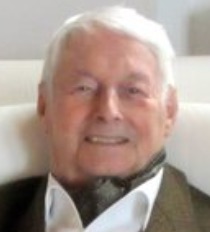
Walter Schuck was a German military aviator who served in the Luftwaffe from 1937 until the end of World War II. As a fighter ace, he claimed 206 enemy aircraft shot down in over 500 combat missions, eight of which while flying the Messerschmitt Me 262 jet fighter. Schuck was a recipient of the Knight's Cross of the Iron Cross with Oak Leaves.

Georg-Peter "Schorsch" Eder was a German Luftwaffe military aviator and fighter ace during World War II. He is credited with 78 aerial victories achieved in 572 combat missions, including 150 combat missions with the Messerschmitt Me 262 jet fighter. This figure includes 10 aerial victories on the Eastern Front, and further 68 victories over the Western Allies, including 36 four-engined bombers.
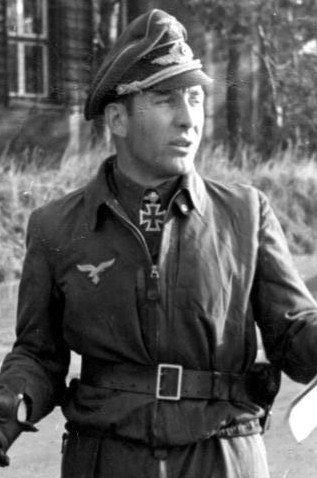
Theodor Weissenberger was a German Luftwaffe military aviator during World War II and a fighter ace credited with 208 enemy aircraft shot down in 375 combat missions. The majority of his victories were claimed near the Arctic Ocean in the northern sector of the Eastern Front, but he also claimed 33 victories over the Western Front. He claimed eight of these victories over the Western Allies while flying the Messerschmitt Me 262 jet fighter.
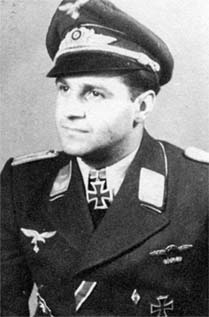
Franz Schall was a German military aviator who served in the Luftwaffe during World War II. As a fighter ace, he flew approximately 550 combat missions and claimed 137 aerial victories—that is, 137 aerial combat encounters resulting in the destruction of the enemy aircraft. He was also a recipient of the Knight's Cross of the Iron Cross, the highest award in the military and paramilitary forces of Nazi Germany during World War II.
Erich Hohagen was a German general in the Bundeswehr. During World War II, he served as a fighter pilot in the Luftwaffe. A fighter ace, Hohagen was credited with 56 aerial victories and was a recipient of the Knight's Cross of the Iron Cross, the highest award in the military and paramilitary forces of Nazi Germany during World War II.
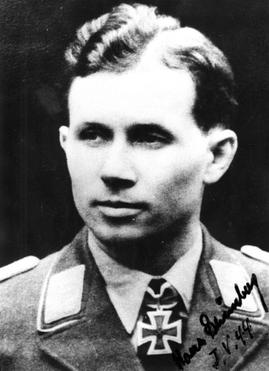
Hans "Specker" Grünberg was a German military aviator who served in the Luftwaffe during World War II. As a fighter ace, he was credited with 82, aerial victories—that is, 82 aerial combat encounters resulting in the destruction of the enemy aircraft—claimed in approximately 550 combat missions. The majority of his victories were claimed over the Eastern Front, with 21 claims over the Western Front, including five flying the Messerschmitt Me 262 jet fighter.

Eduard Tratt was a Luftwaffe fighter, test pilot and flying ace of World War II. Major Eduard Tratt was the highest scoring Zerstörer pilot of the war with 38 victories and Gruppenkommandeur of II./Zerstörergeschwader 26. He was also a recipient of the Knight's Cross of the Iron Cross with Oak Leaves. The Knight's Cross of the Iron Cross and its higher grade Oak Leaves was awarded to recognise extreme battlefield bravery or successful military leadership. On 20 April 1944 he was posthumously promoted to the rank of Major.
Heinz Arnold was a German Luftwaffe fighter ace. He is credited with 49 aerial victories including seven victories claimed flying the Messerschmitt Me 262 jet fighter.
Zerstörergeschwader 76 was a Zerstörergeschwader (wing) of the German Luftwaffe during World War II. The wing operated the Messerschmitt Bf 109 in the early phases of World War II, then the Messerschmitt Bf 110 for the duration of the war.
Nachtjagdgeschwader 11 was a Luftwaffe night fighter-wing of World War II. NJG 11 was formed on 20 August 1944 with one Gruppe (group) consisting of 2 Staffeln.
Alfred Teumer was a German Luftwaffe military aviator and fighter ace during World War II. He is credited with 76 aerial victories claimed in over 300 combat missions. This figure includes 66 aerial victories on the Eastern Front, and further ten claims over the Western Allies.

Wolfgang Schenck was a Luftwaffe fighter ace and recipient of the Knight's Cross of the Iron Cross with Oak Leaves during World War II. He was born in Windhoek in German South West Africa. Wolfgang Schenck was an important figure in the Luftwaffe's development of the fighter-bomber, as well as pioneering work in the use of the Me 262 jet-bomber.
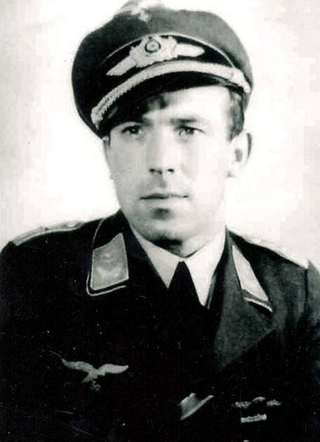
Oberleutnant Ludwig Franz Stigler was a German fighter pilot and fighter ace in World War II.
The German Air Ministry had a system for aircraft designation which was an attempt by the aviation authorities of the Third Reich to standardize and produce an identifier for each aircraft design's airframe type produced in Germany. It was in use from 1933 to 1945 though many pre-1933 aircraft were included and the system had changes over those years. As well as aircraft of the Luftwaffe, it covered civilian airliners and sport planes, due to the RLM handing all aviation-related matters in the Third Reich, both civilian and military in nature.
Herbert Kutscha was a German Luftwaffe fighter ace and recipient of the Knight's Cross of the Iron Cross during World War II. The Knight's Cross of the Iron Cross was awarded to recognise extreme battlefield bravery or successful military leadership. He was one of few Luftwaffe pilots to survive the whole war, serving from 1939 until 1945. During his career he was credited with 47 aerial victories in more than 900 missions.










